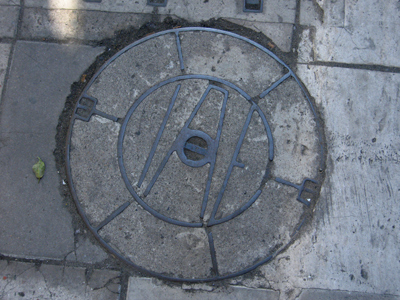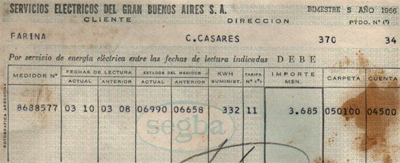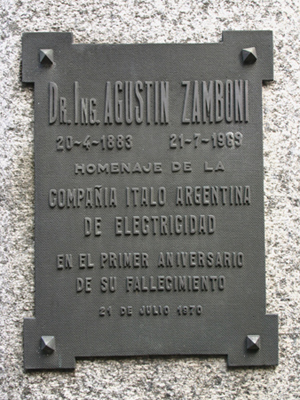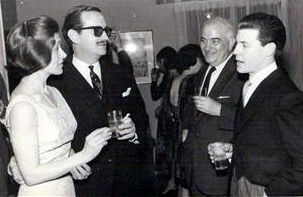
The 1940s presented a series of new problems for the electricity sector. Perón’s dual policy of fixing rates & massive industrialization led to demands the network was unable to meet. To overcome problems & oversee supply, the ministry Agua & Energia de la Nación was created in 1947. Soon followed a 1949 constitution clause to nationalize all public utilities. Perón never followed through with nationalization, but the idea had been planted firmly in everyone’s mind.
The military regime which followed Perón voided the 1949 constitution as well as the scandalous 1936 concession extensions. The CIAE returned to its 50-year agreement, set to expire in 1962. Without extension, the original CADE-CHADE-CATE concession expired that very year (1957). Frondizi‘s development-centered government had to solve problems quickly; constant blackouts were a reminder that the CATE had not lived up to terms of their 1907 concession.

The solution was the creation of a new organization in 1958, 80% state-owned & 20% private. Servicios Eléctricos del Gran Buenos Aires (SEGBA) merged the capital city with surrounding suburbs in an attempt to provide better administration & service. Three years later, the government purchased all private shares. But with democracy & dictatorship rotating like a revolving door during the 1960s & 1970s, a coherent policy for providing electricity failed to develop.
For undetermined reasons, Frondizi granted the CIAE an indefinite period for its concession one year before the original agreement was set to expire. He also added that the CIAE could approach the government for nationalization at a time of their choice. Possible reasons? Perhaps because they offered mainly residential service, perhaps because of their Swiss connections & Frondizi’s intention to secure foreign investment. In fact, conflicting information abounds here… some articles claim that the 1930s concession remained valid. Whatever the reason, the CIAE continued to operate during some of the most difficult periods in Argentine history. Juan Carosio died in 1959, & CEO Agustín Zamboni became company president until passing away in 1969.

During his third presidency, Perón’s idea of nationalizing the CIAE returned as part of a single state organization responsible for national electricity (Empresa Nacional de Energía). The ENE never formed, but Isabel Perón continued acquisition of the CIAE. Frondizi’s promise of a government buyout was decreed null & void in 1976 just before a military coup ousted Isabel from office.
De facto President Jorge Videla appointed former CIAE director José Martínez de Hoz as Economic Minister… very convenient since he authorized the 1979 purchase of the CIAE for about U$S 300 million. The company’s net worth had been valued four years earlier at only U$S 35 million. Someone benefited from adding an extra zero, no doubt Martínez de Hoz. Juan Carlos Casariego, director of foreign investment for the Ministry of Economy & subordinate to Martínez de Hoz, voiced his opinion that the purchase price was excessive (photo below, second from left). On 15 Jun 1977 Casariego was kidnapped, held for ransom & eventually murdered. His daughter opened a case in 2006 accusing Martínez de Hoz as complicit in Casariego’s disappearance.

The Compañía Italo-Argentina de Electricidad became part of SEGBA in 1979. After the restoration of democracy, a Congressional commission investigated the elevated sale price & found wrongdoing but no punishment was ever carried out. During the Menem decade SEGBA was privatized into three companies known today as EDENOR, EDESUR & EDELAP… their names have replaced those of the CIAE on most of Chiogna’s architecture. A 67-year legacy came to a bitter end, but not without leaving an unforgettable mark on the city of Buenos Aires.
CIAE series: Electricity timeline • Precedent & foundation • Swiss holding companies • Architecture 1 2 3 4 • Expansion • Scandal • Fade to black • Building list • Bibliography